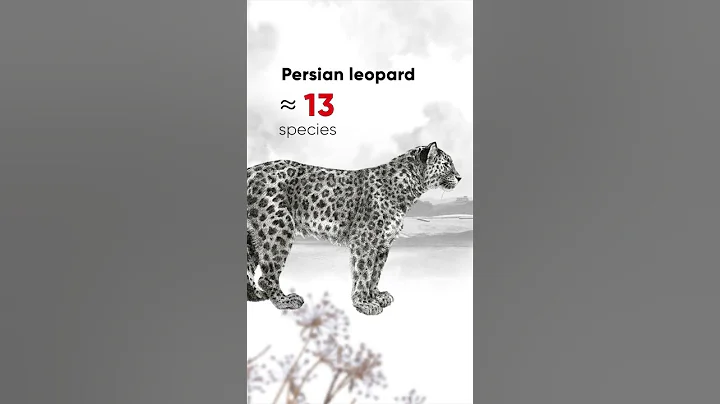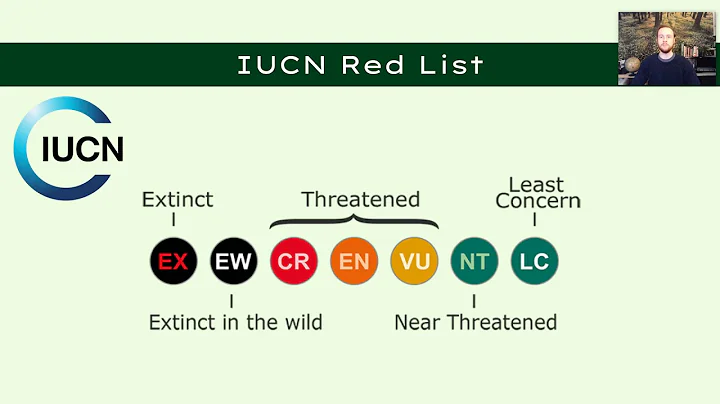Some of the species that appear on the IUCN Red List list may come as a surprise. Not because they are particularly strange or unheard of, quite the opposite in fact. If you think all camels are the same, and you know there are an estimated 35 million camels around the world...your first thought wouldn't be that they are endangered!

This is where the IUCN Red List species wild camel gets confused with its famous cousin, the domestic Bactrian camel . This chaos has adversely affected wild camels, which are in urgent need of protection. There are currently less than 1,000 known wild camels.
has existed in many places in the world in history, but as of the 21st century, the only ones still surviving in the wild are the Ata Mountains in western Mongolia and northwest China. is an incredibly endangered species that can withstand drought, food shortages, and even radiation from nuclear weapons testing! The species evolved in North America more than 46 million years ago and began migrating across Asia, becoming extinct within their ancestral range .

Since their migration, this Bactrian camel has adapted well to the harsh Gobi Desert, where vegetation is sparse, water sources are limited and temperatures range from -40°C to 40°C. They eat thorns and dry, salty plants that other herbivores do not, and they are the only land mammals that can drink salty or brackish water without harm. Because fat is stored on their humps, they can be continuously deprived of nutrients, and when they find a water source, they will quickly drink large amounts of water to replenish the nutrients their bodies lack. They can drink up to 57 liters of water in one sitting!

The difference between camel and human red blood cells
Wild camels and their relatives differ from all other mammals in that they have oval (rather than round) red blood cells. Their elongated cell shape means they can circulate even in viscous blood and spread through narrow blood vessels, preventing the common consequences of dehydration. Camel red blood cells can also expand to 240% of their original size without rupturing; most animals' cells can only expand by 150%. Not only that, unlike other hoofed mammals, their body load is not on the hooves, but on the soles of their feet, and only the front end of the hoof touches the ground.
Every year from January to March is the estrus season for wild camels. When the male beasts fight, they mainly stick their heads between the other's legs, stumble the other, and then bite them with their mouths. At this time, we often see wild camels acting alone, and they are often the losers in courtship fights. It is also common for males in heat to join the domestic camel group and mate with female domestic camels.
Wild Bactrian camels are "polygamous" during the breeding season, that is, each population consists of one male camel, several female camels and underage calves. They have fixed activity areas and are not long-distance migrations as previously suspected. Once the young male camels reach the age of two, they are expelled from the group and go to other groups to compete for dominance. After fighting, the fittest survive, and the ones that survive in the end can adapt to the harsh living environment.

A two-month-old wild camel and its mother
female breed once every two years, with a gestation period of about 400 days and giving birth in March to April of the following year. Each litter gives birth to 1-2 cubs (rarely 2 cubs). The cubs can stand 2 hours after birth and can walk with their parents on the same day. The cubs stay with the mother camel for 3-5 years. Sexual maturity occurs at the age of 4-5 years, and adult life span can reach 35-40 years.

Morphological differences between Bactrian camels (a) and wild camels (b) Wild camels have smaller pyramidal humps, smaller bodies, thinner legs and flatter skulls.
As you can see, they are a very unique and rare species, but their numbers continue to decline, primarily due to hunting, habitat loss, and competition for resources with introduced livestock. Protecting wild camels is necessary for their survival, but confusion between wild and domestic camels is reducing public awareness that the species is on the verge of extinction.
Knowing that protection is crucial to the survival of wild camels, two researchers from the International Union for Conservation of Nature, Yuan Lei from my country's Lop Nur National Nature Reserve and Aditya Yadamsulun from Mongolia's Great Gobi Special Reserve.During their fellowship, they collected data that informed the development of long-term conservation strategies. This strategy has brought benefits to wild camels and the human inhabitants of the harsh desert ecosystem, but more can always be done.





















